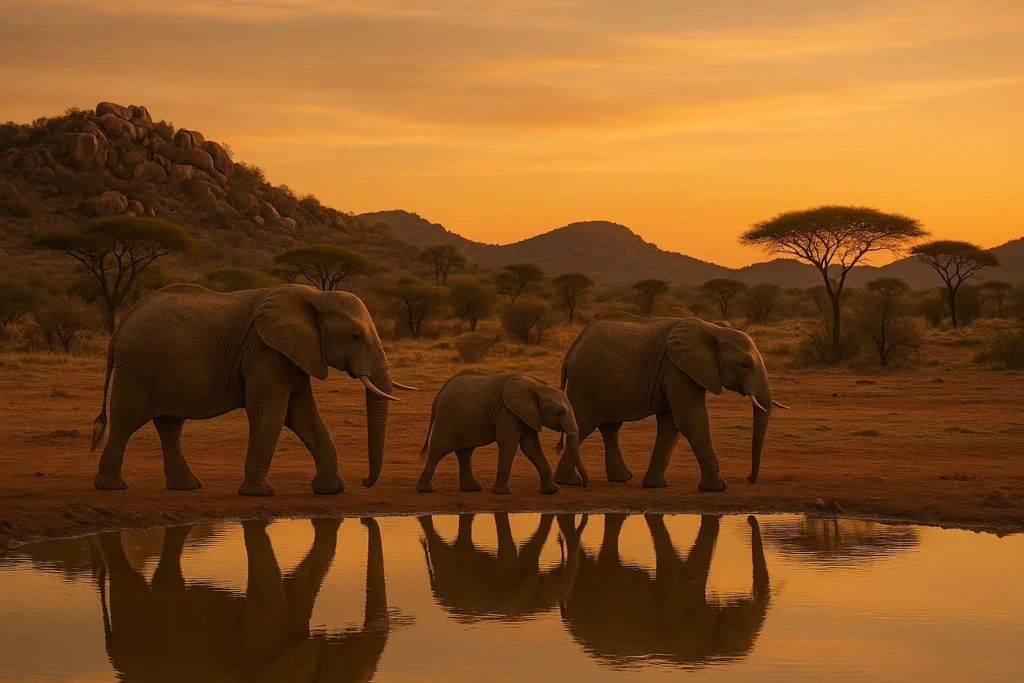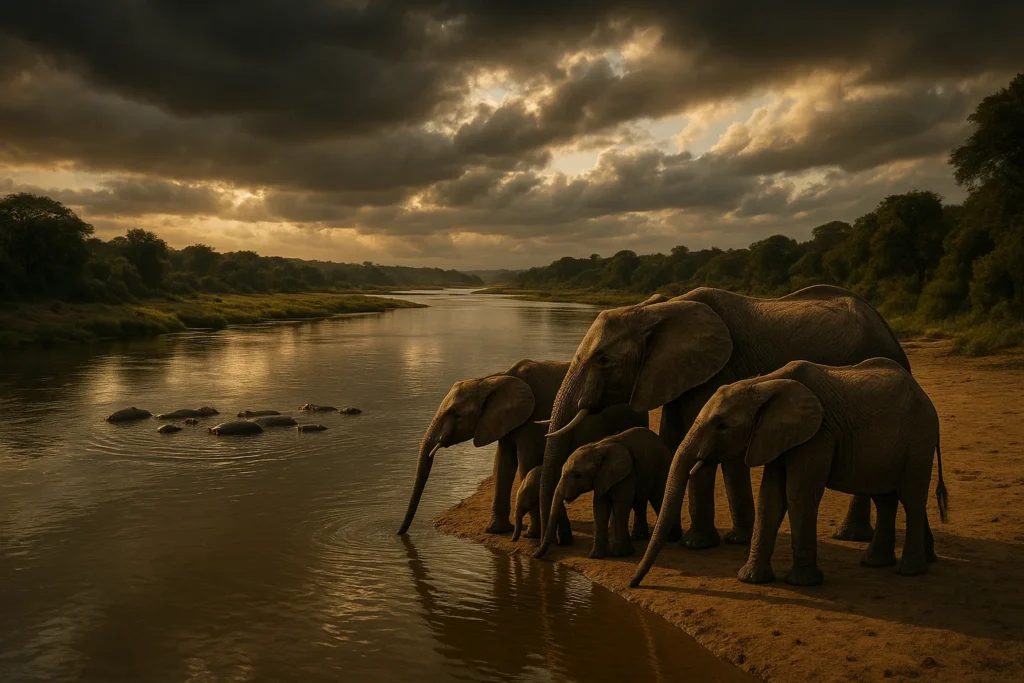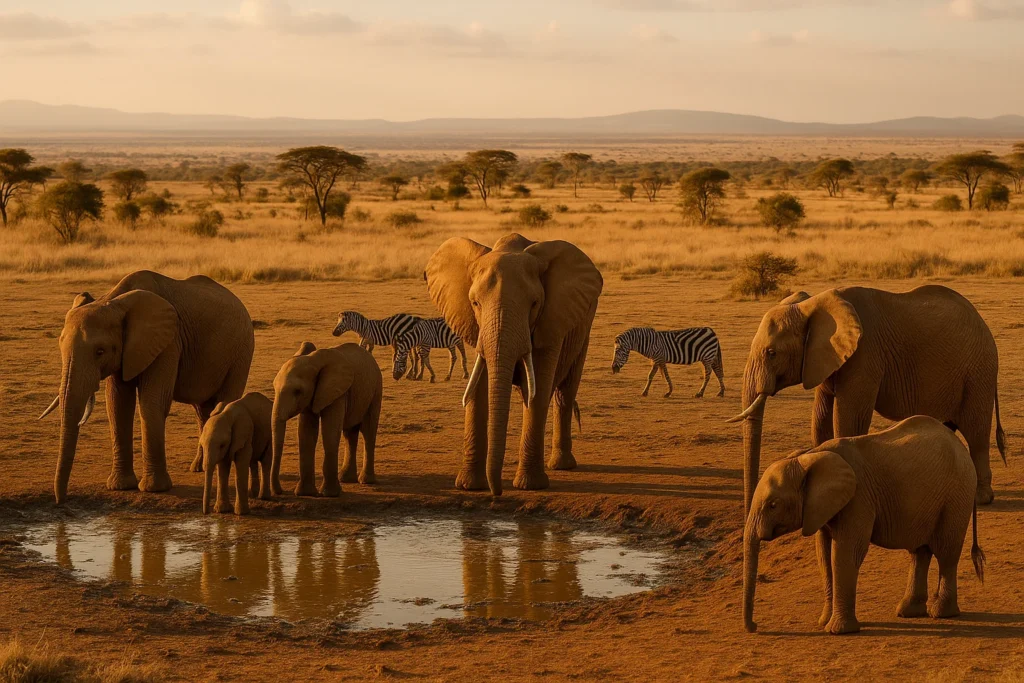When most travelers think of a South African safari, their minds immediately turn to Kruger National Park or Eastern Cape reserves. But tucked away in the North West Province, bordering Botswana, lies Madikwe Game Reserve — a hidden gem that delivers top-tier wildlife, luxury, and tranquillity without the crowds. For those seeking an alternative that combines intimacy, conservation success, and sublime scenery, Madikwe offers a compelling case.
A reserve born from vision and restoration
Madikwe is relatively young compared to many long-established parks. Created in 1994 from overgrazed farmland, the reserve was the site of Operation Phoenix, one of Africa’s largest wildlife relocation efforts. Thousands of animals—elephants, buffalo, rhino, antelope species—were reintroduced to repopulate the ecosystem. Over time, apex predators including lions, cheetahs, spotted hyenas, and critically endangered African wild dogs were added to re‑balance the predator-prey relationships.
This restoration success has turned Madikwe into a flourishing biodiversity hotspot, home to around 66 to 86 large mammal species and up to 300+ bird species. Because the reserve started from scratch, planners had the advantage of designing infrastructure, roads, fencing, and ecological corridors intentionally—avoiding many of the legacy constraints that older parks face.
The “Super Seven”: Big Five + more
One of Madikwe’s most compelling draws is that it offers more than just the iconic Big Five (lion, leopard, elephant, rhino, buffalo). It is one of the few reserves where you can reliably seek the “Super Seven” — adding cheetah and African wild dog to the list.
Wild dogs in particular are notoriously difficult to see, but Madikwe has maintained stable wild dog packs. Because lodges coordinate via radio, guides often share sighting intel, so if a rare species is spotted in one part of the reserve, other safari vehicles can respond.
Adding to the appeal, off‑road driving is permitted in many parts of Madikwe—something not allowed in many South African reserves. This flexibility often brings you closer to animals moving off the beaten path.
Malaria-free, family-friendly & exclusive
Perhaps the most enticing perk for many travelers is that Madikwe is in a malaria‑free zone. No need for anti‑malarial medication, making it safer and more comfortable for families or travelers wary of side effects.
Because access is restricted—only guests staying in the reserve’s lodges may enter—Madikwe offers an unusually exclusive, low‑density safari experience.
Sightings are limited to 2–3 vehicles at a time, so you’re less likely to find yourself competing with dozens of jeeps for the same view. This combination of exclusivity and malaria‑free environment makes Madikwe especially appealing to those who want premium safari quality without compromise.
Landscapes, ecotones & unique ecosystems
Madikwe sits in a transitional zone between the Kalahari thornveld and Lowveld bushveld—a blending of ecosystems that supports flora and fauna from both ecological types.
Its terrain includes seasonal wetlands, perennial rivers, rocky outcrops, mixed bushveld, grasslands, and mountainous ridges such as the Dwarsberg range.
Because of this diversity, animal movement is dynamic. Some species prefer wetter zones, others frequent the drier Kalahari features. That variety increases the chances of varied wildlife encounters on any game drive.
Accessibility & strategic position
Though somewhat remote, Madikwe is remarkably accessible given its secluded nature. It lies about 4 hours by road from Johannesburg, or about a 55–60 minute light aircraft flight from OR Tambo to its airstrips.
Because of its location on the Botswana border, some travelers combine Madikwe with Botswana itineraries.
Finally, many lodges in Madikwe are luxury-level, offering high service standards and amenities—yet with the sense of being deep in the wild.
Avoiding the crowds: a smart alternative to Kruger
Kruger is iconic for a reason, but its popularity means it sees high visitor traffic, especially in peak seasons. Many areas of Kruger are also located in malaria zones, requiring prophylaxis. Madikwe provides a refreshing alternative:
- Fewer visitors means your safari feels intimate.
- Exclusive access ensures serenity.
- Malaria-free status reduces health concerns.
- Strong conservation ethos means your visit supports local communities and species protection.
- A more “off the beaten path” feel, while still maintaining excellent wildlife densities.
For travelers who have visited Kruger or wish to experience a different side of South Africa, Madikwe is a superb complement rather than a competitor.
Timing & tips for visiting
- Best months: Dry season (May–October) is ideal for game viewing, since animals concentrate near water sources.
- Shoulder months (April, November) bring lush greenery and newborns, though sightings may be more dispersed.
- Stay at least 3 nights, to increase your chances of spotting elusive species like wild dogs and cheetah.
- Choose lodges that offer conservation or behind‑the‑scenes experiences, such as bush walks, rhino notching observation, or ops room tours.
- Bring varied photography gear: wide angles for landscapes, zooms for wildlife, and low-light options for dusk/dawn.
- Plan for off-road drives (where permitted) to see animals that avoid roads.
- Respect limits: lodges enforce vehicle caps at sightings to preserve wildlife comfort.
Conclusion
Madikwe Game Reserve may well be South Africa’s best-kept safari secret, but for the discerning traveler, it offers a rare blend of ecological richness, exclusivity, comfort, and unhurried wilderness. If you’re looking to go beyond the usual routes, escape the crowds, and support impactful conservation, Madikwe deserves a starring role in your South Africa journey.
Let me know if you’d like me to expand on lodges, itineraries, or how to combine Madikwe with Botswana or Cape Town.
Frequently Asked Questions (FAQs)
Yes — the wildlife densities, ranger support, and comfortable lodges make it approachable for newcomers while still satisfying more experienced safari-goers.
Leopards are present but elusive, so they are less frequently seen. Their shy nature and terrain contribute to this.
Yes — many lodges include guided bush walks for guests, giving a closer, on-foot appreciation of the smaller flora and fauna.
The reserve operates under a tripartite model: the government (North West Parks), private sector lodges, and local communities all share in management and revenue.
At least 3–4 nights is recommended. Any less and you risk missing chances to see rarer species or adjusting for weather or movement patterns.
Absolutely. Madikwe works well as part of a broader South Africa itinerary—especially before or after a Kruger visit or as a contrast to coastal or city segments.






